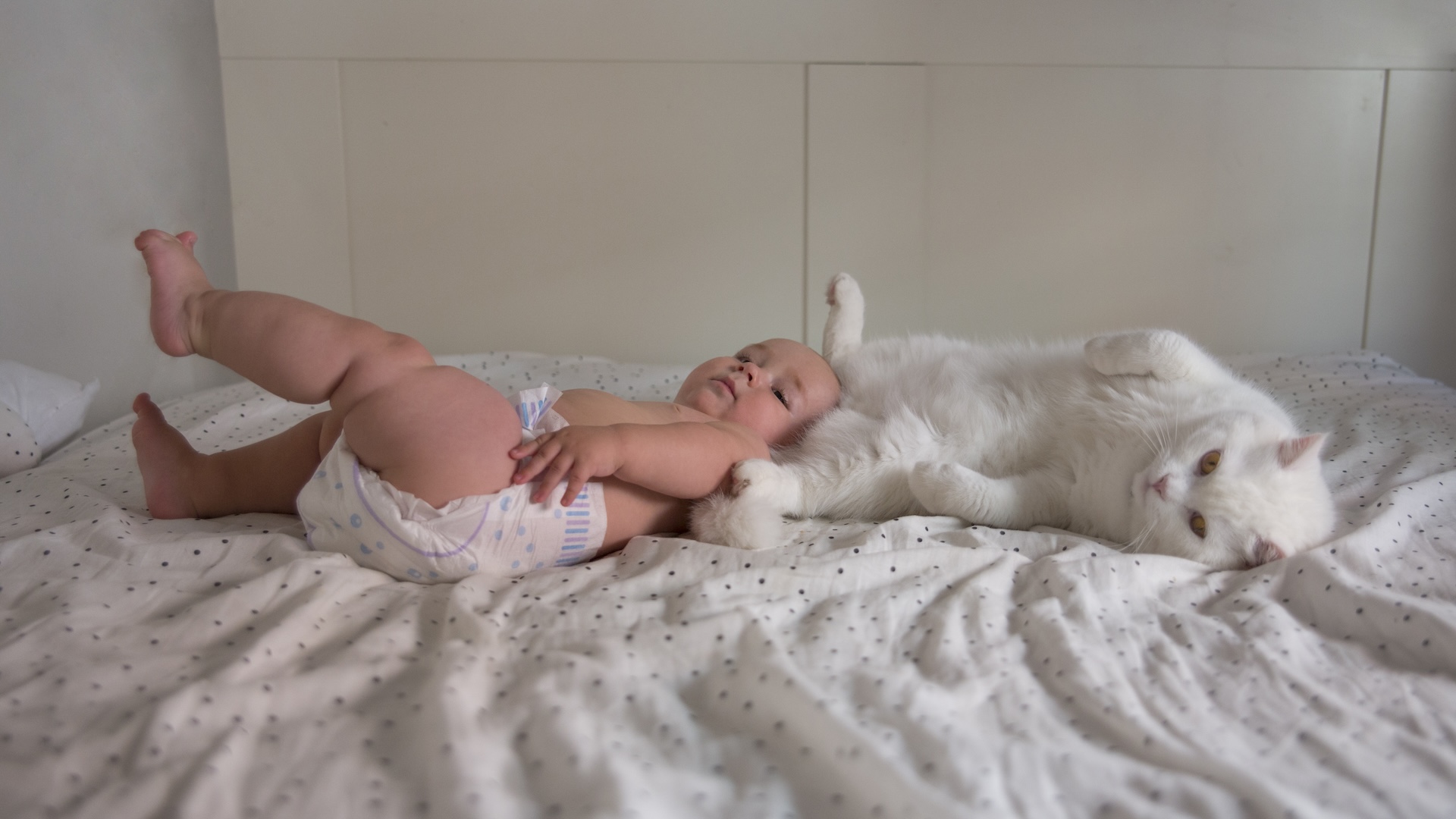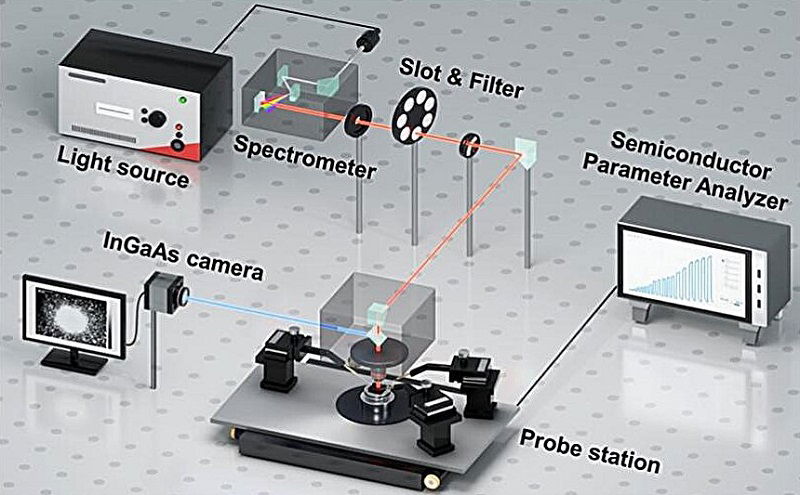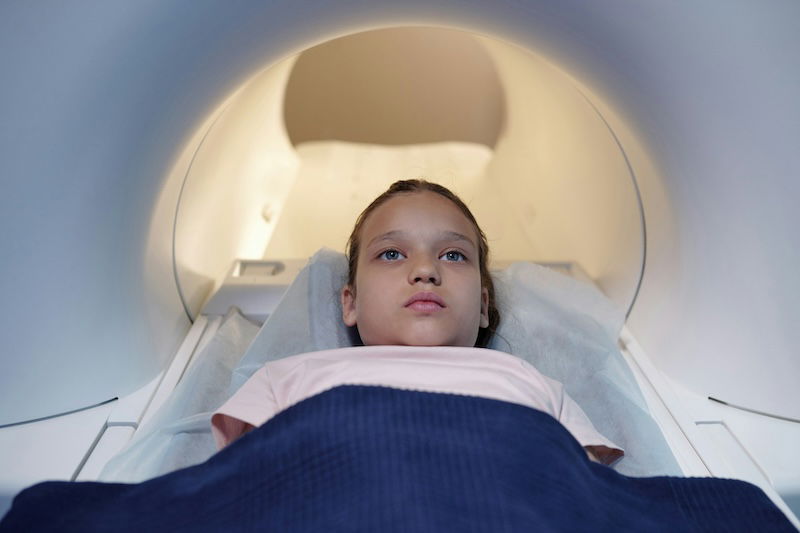Compared with other animals, human babies start out with a lot to learn. Whereas some animals walk within hours of being born or hatching, human babies take months or years to master even the most basic functions. If you’ve ever had a baby and a pet at the same time, you might have wondered which one is smarter.
So what does science say about how the intelligence of human children compares with that of our fur babies? It’s a complex question, and the answer depends on the dimension of intelligence, the animal, and the person you ask.
How smart are dogs compared with babies?
Stanley Coren, a professor emeritus of psychology at the University of British Columbia, has spent his career investigating dog intelligence. He adapted a psychological measure called mental age to test dogs’ cognitive abilities.
While it’s not possible to draw an exact comparison between dog and human intelligence, Coren said dogs do have some cognitive skills, such as vocabulary and counting, that roughly correspond to those of young toddlers. For example, the average dog can understand about 165 words and signals. In exceptional cases, some dogs can learn significantly more. For example, Chaser the border collie, who was specially trained by a retired psychology professor, was reported to understand over 1,000 words.
Most dogs can also “count” up to three, Coren said. If the idea of a dog being able to count sounds unlikely to you, try this: Show your dog three treats, hide them all in your hand, and then give the dog only two. Most dogs will know one treat is still missing and nuzzle your hand to try finding it. And in the lab, studies show that dogs’ brains light up similarly to humans’ as they see the number of dots on a screen change, suggesting they recognize when a quantity goes up or down.
Coren added that trained retrievers, which are bred to fetch downed birds or other game, often keep track of five or more objects in order while hunting. So, even though dogs can’t recite “one, two, three,” like a preschooler might, these sorts of behaviors show that many dogs have some intrinsic understanding of basic counting. In comparison, research shows that 14- and 18-month old human infants are already able to distinguish between two and four objects when an adult counts them.
By analyzing these sorts of cognitive functions, you can estimate the “mental age” of dogs on a human scale, Coren said. “We basically found out that the average dog has a mental age which is about the equivalent of a 2-and-a-half-year-old child,” at least when it comes to certain cognitive skills such as vocabulary, counting and emotional awareness, he told Live Science. He said for different dogs, the number can range from about age 2 to 3.
Related: Are dogs smarter than wolves?
Keeping that mental age in mind can help dog owners understand their dogs’ capabilities, Coren said. For example, just as 2-year-olds aren’t yet fully capable of experiencing and comprehending guilt, dogs aren’t, either; the shy behavior exhibited by dogs after misbehaving is actually just the fear of punishment, Coren said.
It’s important to note that dogs’ intelligence is highly dependent on their breed, experience and training. For example, border collies and poodles generally rank as more intelligent than Chihuahuas and bulldogs. There’s also the caveat that these tests don’t account for different breeds’ unique, instinctive skills, such as herding or scent tracking, which are their own forms of intelligence but are difficult to compare to human cognition.
“Dogs are not four-footed people in fur coats,” Coren said.
How smart are cats versus babies?

The research on domestic cat intelligence is less plentiful, but some studies have probed the cognitive abilities of cats. “We might look at things like problem-solving or innovation/behavioral flexibility as kind of a substitute for an intelligence test,” Jennifer Vonk, a professor of psychology at Oakland University in Michigan, told Live Science in an email.
The landmark research on cat intelligence, conducted by Edward Thorndike in 1898, examined cats’ ability to free themselves from a box by pulling a door open. Although the cats were able to open the door only through trial and error at first, the time it took them to escape the boxes generally decreased as Thorndike repeated the trials, showing that the cats were able to learn. Subsequent studies that used treats in puzzle boxes found that cats could learn new solutions when the puzzle box changed, which demonstrated cats’ ability to adapt flexibly to new learning environments, Vonk said. And while it would be unethical to put human babies in a puzzle box, kids can begin escaping cribs as young as 16 months of age.
Other research has evaluated cats’ memory, which is another important dimension of cognition. Studies have found that cats strategically search for food based on just a single memory, for example. Studies also show that cats grasp the concept of object permanence — the understanding that an object still exists even if it is no longer visible. Human babies usually learn object permanence between 4 and 10 months of age. And a recent study found that cats may even be better at associating words with pictures than human toddlers are.
But even though it’s possible to quantify aspects of cat intelligence with these tests, Vonk doesn’t think it makes sense to view cat intelligence through the lens of human development.
“I don’t think it is relevant to compare animal abilities to those of human children because other species are not just developmentally delayed humans,” she said. “They have evolved to solve different problems because they evolved in different ecological contexts and live in different environments.”
These different evolutionary pressures have made cats excel at skills such as hunting and differentiating scents. “They are probably far more efficient hunters than most humans will ever be,” Vonk said.
Ultimately, cats’ unique adaptations also mean they simply may not be motivated to perform well on intelligence measures the way humans are. Over history, human survival has been dependent on tasks such as tool building and language development. Other animals haven’t had the same evolutionary pressures — for example, cats rely on their sense of smell and physical coordination to hunt, rather than their ability to communicate or build tools — so Vonk believes it just doesn’t work to compare cats with young humans.
“I think you cannot think about animals as being comparable to humans at different stages of development,” Vonk said. “That’s a comparison I try very hard to never make. We have to think about what abilities make sense for cats to have and understand why cats do well at the things they do well at, and worry less about comparing them to humans.”








Leave a Comment